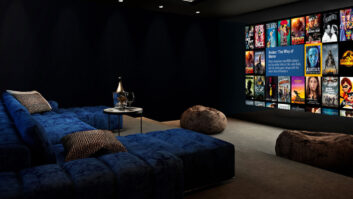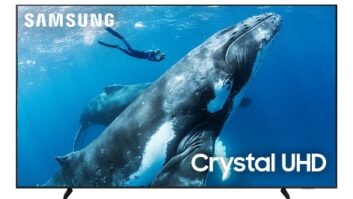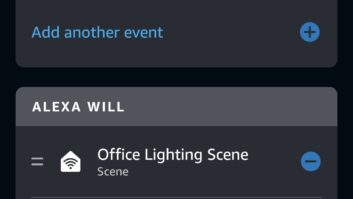
When we first saw superMHL at CES is was positioned as a delivery conduit for 8K content. With the new chips from Lattice bringing the ability to use USB Type-C connectors you don’t have to wait for 8K to take advantage of some of the format’s advanced features.
When superMHL was first unveiled back in January at CES, one of the main unanswered questions was “When will we see this in actual products?” As is normally the case with this type of new technology the answer is strongly related to when semiconductors capable of handling the new format will be available; it was simply too early to get that information back in Las Vegas.
As of yesterday, we now have part of the answer about where superMHL stands with regard to “productization” with the announcement yesterday by Lattice Semiconductor that it has released the world’s first solutions for superMHL that use USB Type-C for connectivity. The two parts are the Sil9396 “receiver” and the Sil8630 “transmitter” chips. As a bit of catch up for those who might recognize the “Sil” in the type numbers as standing for Silicon Image but don’t know who Lattice is, they are a leading supplier of connectivity solutions and completed the purchase of Silicon Image this March. Silicon Image should be familiar to you as they have been a major player in the HDMI and MHL world and were one of the founders of HDMI Licensing LLC as well as a key developer of the format and parts supplier.
As a recap, while the current HDMI standard caps out at 18Gbps, superMHL has the capability to go all the way to 72Gbps, so that it is able to carry 7680×4320/120fps (“8K”) video with 12-bit color using 4:2:0 or any other format combination that requires that bandwidth. Indeed, the announced premise for superMHL was specifically to facilitate 8K for some of the displays at CES. The chips just announced are limited such that they cannot deliver that speed, but they can deliver HDMI 2.0a compatible performance with HDCP 2.2 with 600 MHz/18 Gbps specs for all current HDMI configurations. Even more, these chips can carry Rec. BT-2020, High Dynamic Range, and 35 object-based audio channels over a single lane.

superMHL is “connector agnostic”, but it does have its own proprietary connector. Like USB Type-C it is also symmetrical but is not identical with Type-C.
That, in turn, leads to the real use case for these chips that their MHL heritage allows. To date, the main benefit of MHL has been its ability to carry 5VDC charging current so that a device connected via MHL—be it an early version Roku Streaming Stick or a compatible phone or tablet—can operate without external power. That, over and above to use either standard HDMI Type A connectors or smaller Micro USB connectors, made it an interesting option for portables.
These superMHL chips raise the bar on that score considerably.
By making not only legacy compatibility with MHL 1, 2, and 3 and the current HDMI feature set over just one lane rather than the four required by HDMI, they can use their remaining available connectivity lanes to provide the feature set of USB 3.1 and use the USB Type-C connector.

The ability to delivery 4K video plus bi-directional charging thanks to USB 3.1 and the Type-C connector is a major benefit enabled by Lattice’s new chips superMHL chips.
That last item, alone, is a major step forward. Not only does its small size make it a natural for all manner of portable devices, it is symmetrical. Yes, you no longer have to worry about whether or not you are plugging the cable in “the right way,” as both sides are identical. There is no “up” or “down.” You just plug it in.
While, according to Lattice’s senior marketing manager Adbullah Raouf, for these products MHL itself is “connector agnostic,” the ability of these new chips to make available the USB 3.1/USB Type-C feature set means that product designers can do more in less space. Bi-directional charging, compatibility with a DisplayPort and Thunderbolt and an improved CEC protocol will make products easier to connect and install as well as provide new and important features.
Where might we expect to see superMHL, as made possible by these new chips appear? How about head-mounted displays, VR/AR products, “mobile productivity accessories”, laptops and, of course, phones and tablets? Having superMHL in a display would certainly be on Lattice’s target list for these new chips, but because the new Rx chip has only a single input, I expect that any display with superMHL would almost certainly also sport three or four standard HDMI inputs for legacy devices.

Expect to see more USB 3.1 devices with Type-C connectors in the video, as well as PC/data products worlds thanks to superMHL.
For those worried about backwards compatibility, the initial appearance of USB Type-C (albeit without superMHL) in the new MacBook has a wide range of Type-C to “whatever” adapters. Particular to our discussion here, there are or soon will me USB Type-C to HMDI Type-A and USB Type-C to micro-USB (for charging and audio connections.) Once the active cable adapters that make the conversion possible, we will also see USB Type-C to DisplayPort and Thunderbolt adapters.
Now that we’ve talked about the “what” of superMHL along with the “why” you might benefit from it, particularly with USB 3.1/Type-C connector option these new chips make possible, one must inevitably circle back to the one question everyone will ask: WHEN? The quick answer is that the chips’ availability is something that is required for the products to appear, but now we have to wait for news from manufacturers who one can only imagine are busy working with the sample chips that are already shipping.
Reviewing what superMHL does, we can prognosticate that when the next round of phones and tablets with “Android M” appear they might have it. After all, the USB Type-C connector is already part of the “M” package, so that makes them a logical suspect. VR headsets would benefit not only from the ability to deliver 4K video, but also to power or charge the headset without an additional cable. Cameras, whether DSLR or “action/wearable,” and camcorders, are a target market. Then, should superMHL appear on AVRs, surround processors, or displays, we’ll also have the ability to power and transport 4K video on one cable to streaming devices. Think about it, wouldn’t a 4K Roku, Chromecast, or, dare we dream, a new AppleTV with this type of connectivity be something you’d like?
These new chips may well prove to fill an open hole in the jigsaw puzzle that is 4K connectivity. In and of themselves they can’t make new products appear, but without them some features just aren’t possible. We’ll have more on this as implementations of superMHL and USB Type-C appear moving into this year’s selling season both here online and in a more in depth report in a future issue of Residential Systems.







